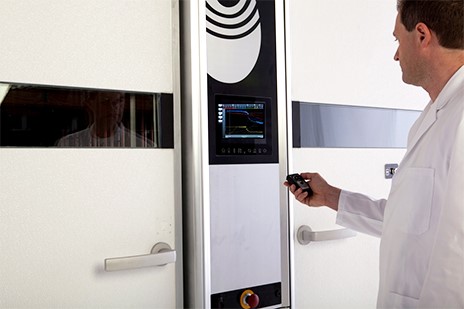



Chick Checking and Incubation Improvement: Part 1
In this article, the first in a series from Petersime, the baseline for a good chick quality assessment is described. In simple terms, how can one be sure that a certain issue is incubation related?"Chick quality becomes more and more important. A hatchery must produce qualitative chicks in order to meet the expectations of the farmer.
"The following series of articles will look at individual chick quality issues and the respective adaptions to the incubation programme or incubation process in order to make improvements.
"The described issues and potential solutions are based on many years of experience of the Petersime Hatchery Development Department," says Roger Banwell, Hatchery Development Manager, Petersime NV.
Eliminating external factors
Poor chick quality issues can invariably happen at random times and/or to varying degrees. Whilst such events can appear randomly, it is not obvious to find the critical elements. Therefore the first task is to eliminate external factors.
Before even considering changing the incubation programmes, ensure the following do not relate to the issue or the intensity of the issue:
- Flock type
- Flock age
- Storage times
- Farm
- House
- Set day (also transfer and hatch day)
- Transport (day, time, truck etc.)
- Specific setter or hatcher
- Relation to any technical issue with HVAC
- Extreme ambient conditions
- Any recent changes in hatchery or pre-hatchery practices, including change in cleaning products, fumigants, vaccination materials etc.

There will be issues that are not mentioned in the list above. For example, a real case study where I worked on: a particular team leader often transferred into wet hatcher baskets without the manager being aware of it. Through an unannounced visit made by me, the issue was eventually identified.
In such cases, the manager could have begun to make changes in his incubation programmes to solve the issue and could have created a confused and complicated chain of events.
Eliminating other important elements
Further questions should be asked around investigating the following factors:
- Does the issue relate to the setting pattern?
- Was the machine partially loaded?
- Did the setter and hatcher remain faithful to the programmemes?
- Was the hatch timing correct?
- Is the issue throughout the complete setter/hatcher, or does it relate to a certain location within the machine?
- Is the automatic transfer/in-ovo vaccination equipment performing well and is the equipment clean?
- Has the breeder farm changed any practices, feeding or had any recent disease challenges?
Investigate incubation
Having checked that the hatching egg source is good, that the equipment is technically correct and free to operate correctly (good HVAC, cooling water supply etc.), that all the hatchery practices are performing consistently well and have not been changed and that the hatchery and the equipment is contamination free, only then can one begin to investigate the incubation.
Once reached this point, it is important to ensure you maintain a logical approach to your investigation and keep a broad view.
Often, because the issue appears to relate to a certain incubation stage, the instinct will be to make changes in the incubation programme of that stage. For example, when there is an issue at the hatching process, the instinct will be to make changes to the hatcher programme. However, this is not always the correct procedure. If for example your hatch timing is early and there is an increase in early embryonic mortality (blood ring, black eye etc.) then the problem is probably poor early setter conditions.

Perhaps one of the most important elements is patience and common sense.
Some of the most typical mistakes is making more than one change at the time. This makes that the effect of each change cannot be clearly identified.
Judgements being made from one trial without firstly ensuring the trial didn’t fail because of another element, can lead to false conclusions. Repeating the same test is a good practice to ensure the results are valid.
I have seen clients making changes to their programmes that did not solve the problem, but they did not revert the programme back to its original status. This ends mostly in an extremely compounded situation that begun with one issue and ends up with a multitude of errors.
Petersime Hatchery Development Department
It should also always be remembered that Petersime NV has a dedicated team of frontline support personnel that can offer advice and guidance.
The Petersime Hatchery Development Department can give performance optimisation support and it is always strongly recommended that this wealth of knowledge and expertise is utilised by all Petersime customers.
Summary
A good chick quality is essential for a hatchery. Adjusting incubation programmes is a way to improve on chick quality. However, not all chick quality issues are incubation related.
Elimination of certain factors and maintaining a logical approach to your investigation is essential. The Petersime Hatchery Development Department can always give support where necessary.








